Buyside traders had their work cut out for them in 2011. At the forefront were issues that ranged from getting the right technology in place, to keeping strong relationships with brokers, to the age-old problem of accessing liquidity.
Those were the primary issues highlighted in a dozen interviews this past year in Traders Magazine’s “Buyside Snapshot,” which chronicles life on the buyside and the issues buyside traders face.

For Dan Royal, global head of trading at Janus Capital Group, his big challenge was consolidating his front-end technology at the $165-billion firm. He reported back in January that his first task was to get all the global desks on the same execution management system. After that, his goal was to pare down the number of algorithms on its desktop, using a best of breed philosophy.
http://www.tradersmagazine.com/issues/24_318/janus-capital-trader-dan-royal-106928-1.html
“I want to get to the point where we have only 30 to 40 different algos from our current level,” Royal said. Trade cost analysis will be a big part of this overall effort, and getting back real-time information is the ultimate goal, so that traders can make better decisions in the middle of trades and adjust strategy if necessary.
The giant money manager Franklin Templeton has a better view into the marketplace because of the information it is getting from its brokers in real time, according to David Lewis, who heads U.S. stock trading in Fort Lauderdale, Fla. Franklin Templeton gets greater transparency of its trades and sees where they were executed and routed, as well as whether they took or added liquidity.
Franklin Templeton is getting information beyond what is in the standard FIX Protocol tag from its brokers. Next year, the FIX Protocol will move toward providing more information on the various destinations an order is routed, as well as where it was executed. Currently, Franklin Templeton appears to be ahead of the curve in that area.
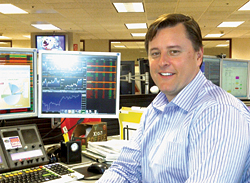
“What I’m learning is that I’m able to watch the algos: How they interact with the market, before they execute, while they are still executing, and afterward, how they revert,” Lewis said. This gives traders insight into the marketplace and whether they need to adjust their strategy, Lewis told Traders Magazine earlier this year in February.
An integration of trading systems was also a top issue this year at Munder Capital Management, according to Dennis Fox, who runs trading for the Birmingham, Mich.-based firm. An acquisition was behind this, as Munder bought Integrity Asset Management of Rocky River, Ohio. The Integrity desk remained open, which offered benefits: It allowed Integrity portfolio managers to continue to deal with the same trading desk, and once the technology is integrated, both desks can back each other up, Fox said.
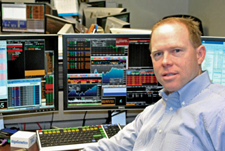
http://www.tradersmagazine.com/issues/24_320/munder-capital-dennis-fox-107238-1.html
Once the systems are in place, then TCA will then take on greater importance for Integrity. Munder uses ITG’s Alpha Capture. “They had not used TCA in the past,” Fox said. “Once their files are brought into our system, we will be able to run a historical analysis on their portfolios, in addition to running all of their future trades through our vendor.”
Meanwhile, at First Investors Management Co., Kevin Walsh is pure old school trading-technology isn’t a priority and almost all orders get handed off to brokers. The mutual fund provider is a low-turnover shop and gets noticed by the Street by paying 4 cents a share for its trades, Walsh reported in April.
http://www.tradersmagazine.com/issues/24_321/first-investors-management-kevin-walsh-107450-1.html
“The Street likes us and we get treated very well for our size,” said Walsh, adding that the desk gets veteran sales trading coverage and sees good allocations for initial public offerings. From 40 to 50 percent of its holdings are in small and mid caps.
Walsh would like to get an order management system, as it would save him work to manually process trades. But he’s satisfied with the status quo overall, he said, particularly with the level of service from his upstairs trading partners. “The high touch desks aren’t that active these days and want to stay active with accounts that do steady business,” Walsh said. “They don’t want to just push buttons all day.”
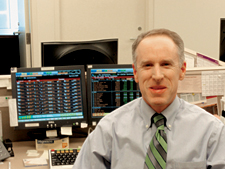
But you’ll find the opposite from David DeVito, CMT, the head trader at Madison Investment Advisors, which runs $7 billion in equities. DeVito is a huge fan of self-trading and executes about 75 percent of his flow electronically. A former Nasdaq market maker, DeVito favors electronic trading because it cuts down on leakage, as well as being faster, more efficient and avoiding miscommunication with upstairs desks. “The sellside getting their hands dirty doing the actual trading doesn’t make sense to me anymore, unless they have liquidity,” DeVito said.
http://www.tradersmagazine.com/issues/24_329/david-devito-madison-investment-109523-1.html
However, he still finds tremendous value in the sellside. He’s an unabashed fan of their market calls in these topsy-turvy economic times, given the global economic turmoil. DeVito wants to know how the macro environment is affecting U.S. equities. “I need them,” he said. “They are my ear to the Street. To have experts consolidate the complexities of today’s market for you adds tremendous value.”
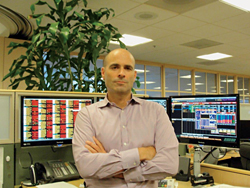
Consequently, he’s got about a half-dozen brokers he trades with to get that information. In a perfect world, however, DeVito would like to get the same market reads from a low-touch desk that he currently gets from sales traders. “I wish there were an electronic sales trader,” he said, “someone who concentrated on trading desk research and news flow.”
Joe Scafidi, a former position trader who later co-headed U.S. equity trading at Banc of America Securities, joined Brandes Investment Advisors and the buyside in 2007. This newcomer to San Diego also sees the value in sellside relationships and spends more than his share of time cultivating those relationships. The main reason for that is Brandes specializes in global investing. About 75 percent of the firm’s roughly $42 billion in assets is in overseas stocks.
http://www.tradersmagazine.com/issues/24_328/scafidi-block-trading-brandes-109421-1.html
“I work as hard at maintaining relationships today as I did when I was on the sellside,” Scafidi reported back in September. The primary reason for this is he has multiple relationships at each firm, dealing not only with a firm’s U.S. desk, but also its European and Asian desks, too. Sometimes he has to remind a firm that Brandes is “a global customer,” he said.
Still, having been on both sides of the Street, Scafidi explained that traders and portfolio managers need to understand their core proficiencies, their roles and not overstep their bounds. “I’m not a stock picker,” Scafidi said. “I have a sense of how to trade; I know my levels and I know markets. That’s my skill.”
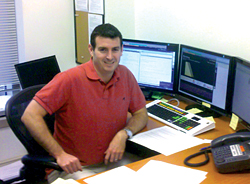
Sean Murphy, on the other hand, is a stock picker. He runs Game Creek Capital, a $40 million absolute return hedge fund in Boston. Our July story outlined his investment philosophy, and it’s all about taking “big swings.” A stable investment pool is one reason why Game Creek can take big positions and be patient: The fund is 50 percent owned by money manager Dick Mayo of GMO fame, and a large portion of the money under management is his. So there is no fear of redemptions. “We had the capital behind us to take big swings,” Murphy said. The performance followed, as it had far outpaced the return of the S&P 500 for the previous three years, making an annualized compound return of 17.8 percent.
http://www.tradersmagazine.com/issues/24_325/game-creek-sean-murphy-107849-1.html
Murphy, a former portfolio manager at Vardon Capital in New York, keeps a daily journal that helps him analyze his process and performance. This helps him to better understand stocks and markets. He compared this process to the “heat map” that Ted Williams used to know which pitches were in his sweat spot and would lead to a base hit and which pitches would lead to an out. “I’ve found where my happy zone is and where those stocks are that tend to give me an edge, Murphy said.
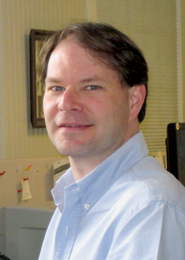
Volatility appears to have impacted block trading this year, as it was down again in 2011, according to a recent Tabb report. Blocks only account for about 3 percent of all trades, and when taken as a percentage of overall volume traded, blocks are only 13 percent of the market, down from 15 percent last year, Tabb said.
Two traders recently highlighted in Traders Magazine, however, expressed a continued enthusiasm for blocks. Craig Jensen, principal and head trader at Armstrong Shaw Associates, said if he can get a good-sized block that’s reasonably priced, he’ll take it. “Anytime somebody shows me size, I’ll likely trade it,” Jensen said.
http://www.tradersmagazine.com/issues/24_323/craig-jensen-armstrong-shaw-107523-1.html
Armstrong Shaw focuses on large-cap value stocks, and these stocks are often not the most liquid and can be hard to trade, Add in the fact that it favors a concentrated portfolio, and it is clear why Jensen prefers to trade blocks. Even though he’d rather trade in a size of six figures, he doesn’t shy away from the 10,000 share block. “From a trading standpoint,” Jensen said, “with so many different choices and execution venues, it’s tough to get a block done.”
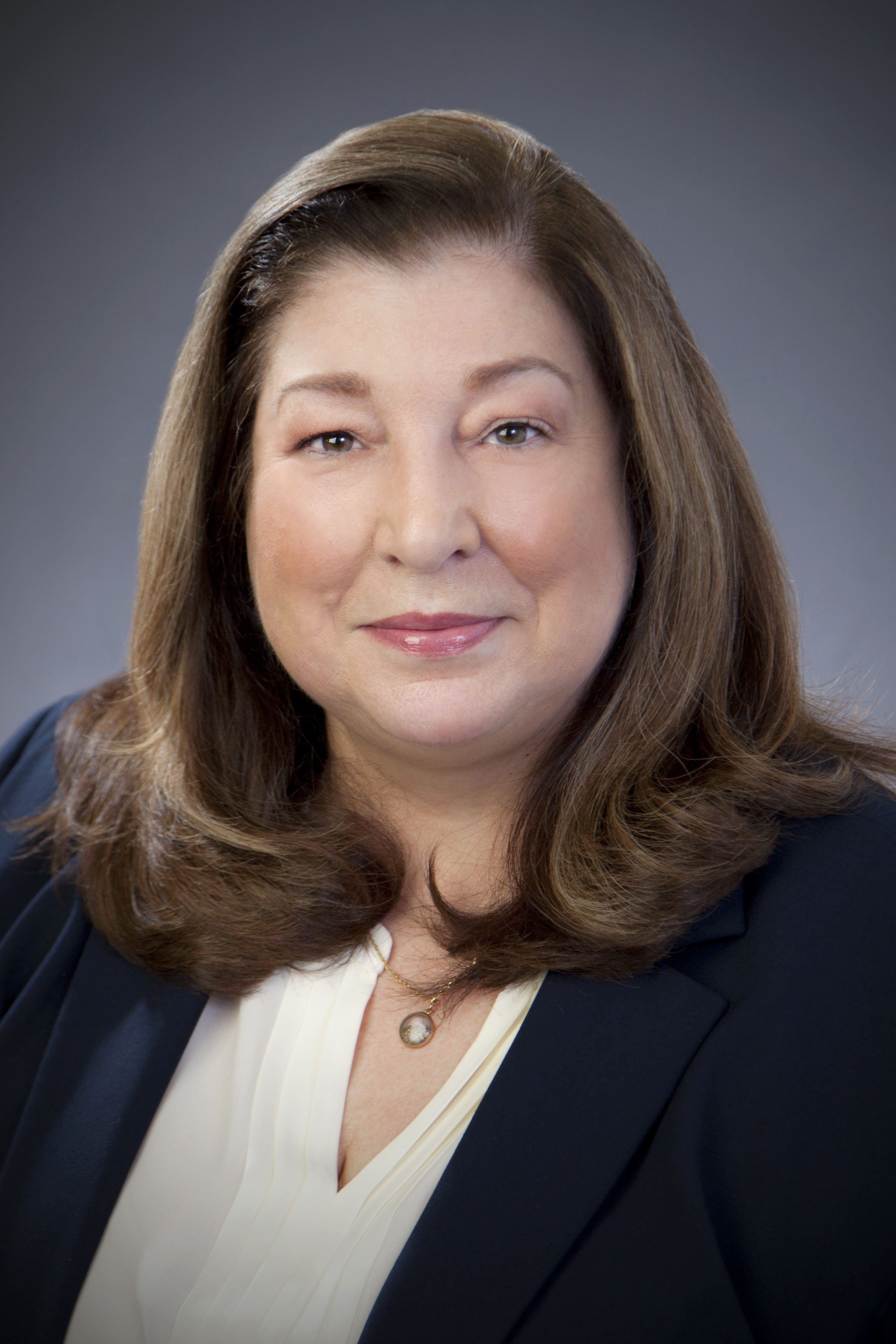
In Canada, blocks are also sought by traders like Genus Capital Management’s Michael Thom, who trades less-liquid Canadian stocks. Like Jensen, he finds that liquidity trumps price when looking for blocks. “Good liquidity always demands a premium,” Thom said. “And we’re happy to pay for liquidity. Our trading style tends to be more liquidity taking than providing, and we understand there are costs associated with this style.”
http://www.tradersmagazine.com/news/genus-liquidity-canada-liquidnet-107897-1.html
Fortunately, Thom can dial up a broker for a block that requires capital. About 20 percent of his firm’s trades involve a capital commitment from his brokers. He’s also a fan of agency crossing systems, which cut down on leakage and also don’t require a broker’s balance sheet. “Liquidnet is our preferred dark venue, as we often find the size and blocks we want there,” Thom said.
Sometimes a management change can dictate a new way of doing business on the trading desk. Take the Ohio Public Employees Retirement System, for instance. OPERS, the 12th largest public pension fund in the U.S., reclaimed trading from six external managers.
That decision came about after John Lane was named chief investment officer in January 2010. He had implemented a similar program at his previous employer, the Public School Employees Retirement System in Pennsylvania. It’s all about maximizing commission flow, explained Joan Stack, OPERS trading manager of the $45.6 billion fund.
http://www.tradersmagazine.com/issues/24_324/ohio-public-retirement-stack-107721-1.html
“It was the biggest single change to the equity trading desk’s operation in years,” said Stack, who joined the fund in 2003. “The belief is that commissions are an asset of the system, and we’d like to control them.” More external managers were expected to join the program, she said in an early summer interview, and the added flow was expected to create the need for another trader.
The November story featured Jennifer Setzenfand, a senior equity trader at Federated Investments, who is the incoming chair of the Security Traders Association. She is not only a second-generation trader, but she is also following in her father’s footsteps at STA. What separates her from the traders of the generation of her father, Dennis Green, is that she trades multiple investment instruments-everything from structured notes to convertibles to options to futures, and of course, equities.
http://www.tradersmagazine.com/issues/24_330/setzenfand-sta-president-109610-1.html
“I love the excitement of trading,” said Setzenfand. “There are so many different challenges.” Indeed, one of those challenges has been keeping ahead of the curve of change, as her career has spanned the end of the high-touch era to today’s low-touch electronic trading environment.

0)]
Adaptability is what makes a good trader, she points out, and knowing when to use an electronic tool and when human intervention can be crucial. Sometimes, you just have to pick up the phone and learn more about the person on the other side, she said.
The subject of our December snapshot, Cortina Asset Management’s Drew Harbeck, got involved with the Security Traders Association of Wisconsin when he was an assistant trader. His stature in the organization has grown, and in October he spoke on a panel at the STA’s national meeting, a stint typically reserved for more experienced traders.
http://www.tradersmagazine.com/news/cortina-drew-harbeck-trading-109620-1.html
“The small-cap side of the business is still very dependent and reliant upon relationships,” Harbeck said. “There is still a lot of value provided by sellside brokers and they’ve helped us source liquidity that we normally wouldn’t have been able to access.”
That typically means finding blocks, though the firm uses crossing networks like Liquidnet, BIDS and BlockCross. “If I send someone an order, and it’s one of my better relationships, they’re going to know exactly how I want that order worked.”



